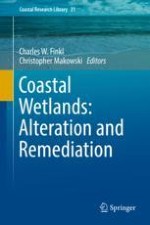2017 | OriginalPaper | Buchkapitel
15. Ecological Aesthetics Perspective for Coastal Wetland Conservation
verfasst von : LeeHsueh Lee
Erschienen in: Coastal Wetlands: Alteration and Remediation
Aktivieren Sie unsere intelligente Suche, um passende Fachinhalte oder Patente zu finden.
Wählen Sie Textabschnitte aus um mit Künstlicher Intelligenz passenden Patente zu finden. powered by
Markieren Sie Textabschnitte, um KI-gestützt weitere passende Inhalte zu finden. powered by
